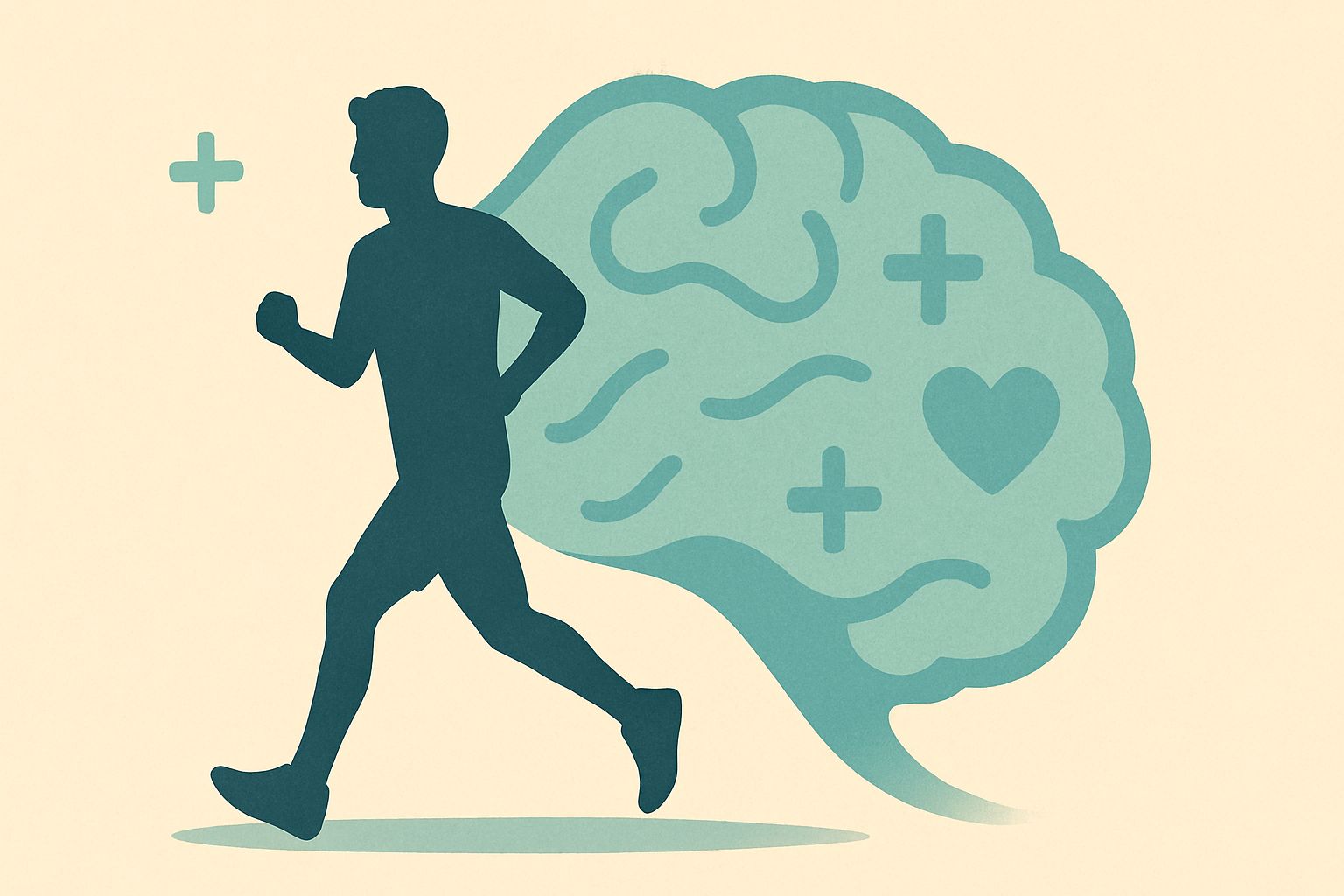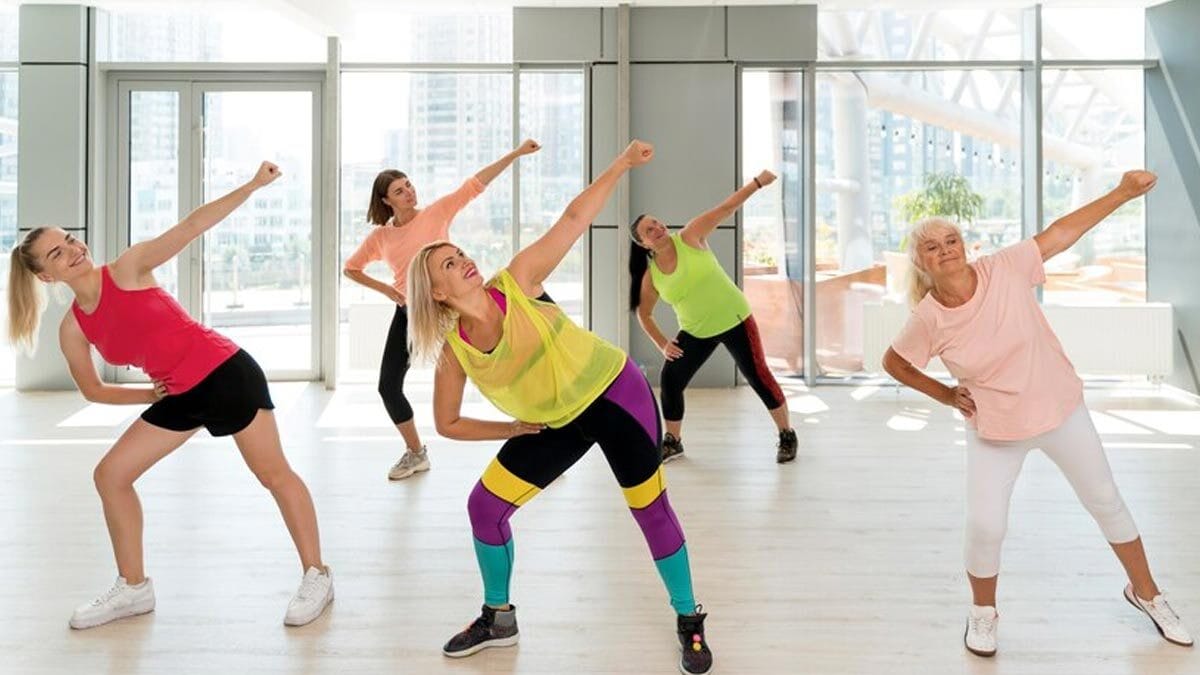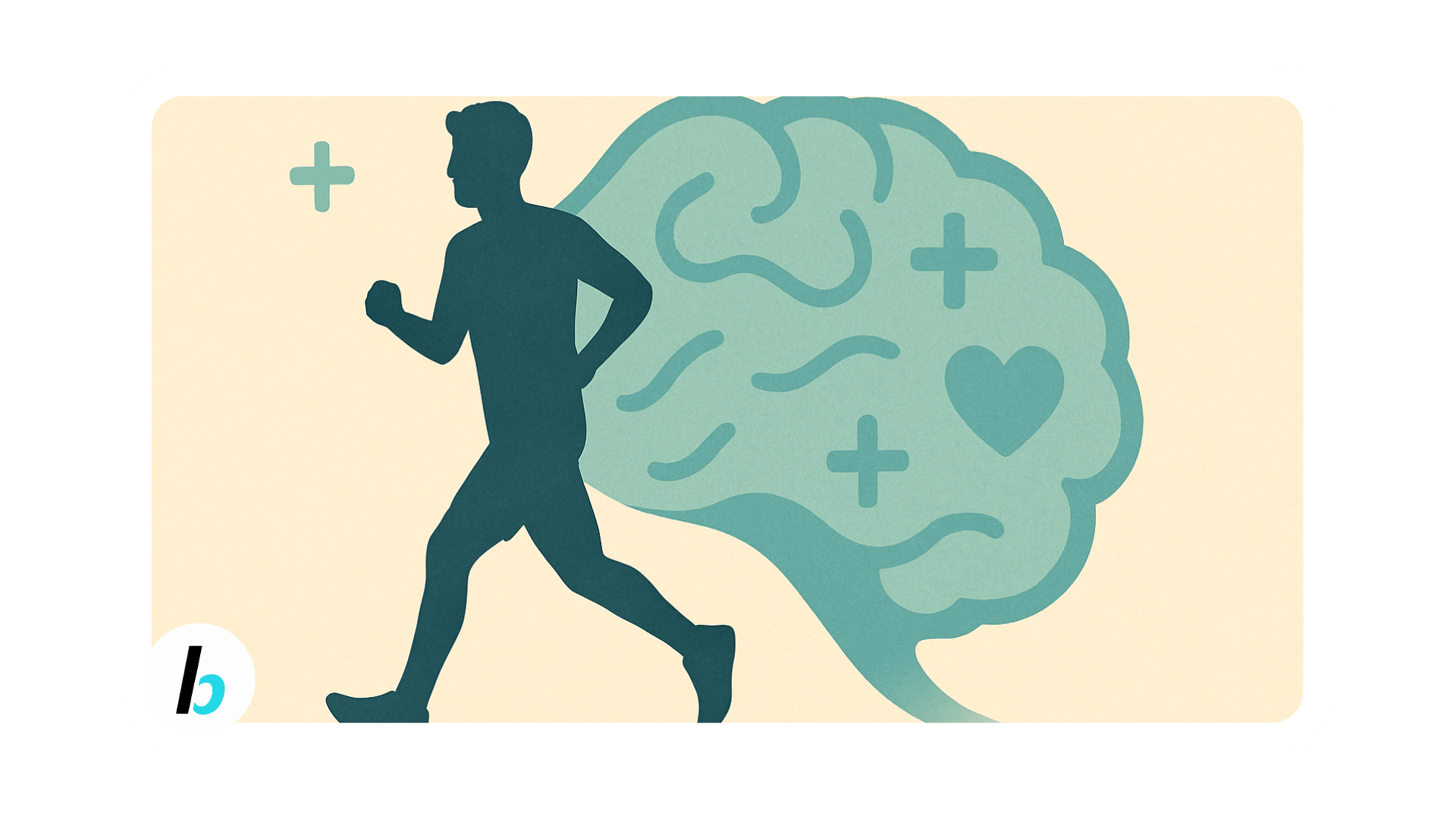Hey fitness nerds!
Thank you all {{active_subscriber_count}} of you!
While medications and therapy remain important tools for managing anxiety, growing research suggests that something as simple as regular exercise might be one of the most powerful interventions available.
And it comes with zero side effects and numerous additional health benefits.
Read 🔽 below!
🧠
IN LESS THAN 10 MINUTES WE WILL COVER:
Weekly Insights:
How Workouts Can Boost Mental Health
Article Explained Simple: Why It's Easier to Regain Strength With Muscle Memory
Top 3 Fun Cardio Workouts (That Don't Feel Like a Workout)
Air Fryer Healthy Raising Canes Recipe
Seeking impartial news? Meet 1440.
Every day, 3.5 million readers turn to 1440 for their factual news. We sift through 100+ sources to bring you a complete summary of politics, global events, business, and culture, all in a brief 5-minute email. Enjoy an impartial news experience.
How Workouts Can Boost Mental Health

Anxiety disorders affect nearly 20% of adults, making them the most common mental health conditions in the United States. While professional treatment is essential for many, exercise has emerged as a powerful complementary approach that can significantly reduce anxiety symptoms in both the short and long term.
The connection between physical activity and reduced anxiety isn't just anecdotal. Multiple studies have found that regular exercise can be as effective as medication for many people with mild to moderate anxiety.
One landmark study published in the Archives of Internal Medicine found that participants who exercised regularly experienced a 20% reduction in anxiety symptoms compared to those who remained sedentary.
The anxiety-reducing effects of exercise work through several mechanisms. First, physical activity triggers the release of endorphins, the body's natural mood elevators. These chemicals create the famous "runner's high" and provide immediate relief from tension and worry that can last for several hours after your workout ends.
Beyond the temporary endorphin boost, regular exercise leads to increased production of BDNF (Brain-Derived Neurotrophic Factor), a protein that supports the growth of new neural connections. Higher BDNF levels are associated with improved mood regulation and reduced anxiety sensitivity over time.
Exercise also works as a form of exposure therapy for anxiety. During vigorous physical activity, many of the physical sensations associated with anxiety, increased heart rate, rapid breathing, and sweating, occur in a controlled, positive context. This helps your brain disassociate these sensations from danger, potentially reducing panic responses in everyday situations.
The type of exercise matters less than consistency. While some research suggests that aerobic activities like running, swimming, or cycling may be particularly effective for anxiety reduction, any form of movement that you enjoy and will stick with regularly can provide benefits. The key is finding something sustainable that you don't dread doing.
Intensity also plays a role. Moderate-to-vigorous exercise appears to have the strongest anti-anxiety effects, but even light activity like walking has been shown to reduce symptoms.
One study found that just 10 minutes of brisk walking decreased anxiety as effectively as a 45-minute meditation session for participants with generalised anxiety disorder.
For many people with anxiety, high-intensity interval training (HIIT) offers unique benefits. The intense focus required during short bursts of maximum effort can create a form of "moving meditation" that breaks the cycle of rumination. The brief recovery periods between intervals also mimic the stress/recovery cycle, potentially training your nervous system to recover more efficiently from stress.
Strength training has its own anxiety-reducing benefits. The progressive nature of weight training gradually increasing load over time builds not just physical strength but mental resilience and self-efficacy. Seeing yourself overcome physical challenges in the gym can translate to greater confidence in handling life's other challenges.
Group exercise classes offer additional benefits through social connection. Loneliness and isolation are major risk factors for anxiety, and the community aspect of fitness classes can provide valuable social support. Research shows that exercising with others can amplify the mood-boosting effects compared to working out alone.
For those who struggle with social anxiety, solo activities in nature provide a gentle starting point. Outdoor exercise combines the benefits of physical activity with the calming effects of natural environments.
Studies show that just 20 minutes of exercise in a natural setting significantly reduces anxiety markers in the brain.
The timing of your workout may also matter. Morning exercise appears to set up your nervous system for better stress management throughout the day. Evening workouts, on the other hand, can help process the day's stresses and improve sleep quality crucial since poor sleep is strongly linked to increased anxiety.
For those with panic disorder specifically, gradually increasing workout intensity can help build tolerance to the physical sensations that often trigger panic attacks. Starting with walking and slowly progressing to more vigorous exercise allows your body to adapt while building confidence that these sensations are safe.
Even during periods of high anxiety, gentler forms of movement like yoga, tai chi, or qigong can be accessible. These mind-body practices combine physical movement with breathwork and mindfulness, directly targeting the autonomic nervous system that regulates the fight-or-flight response.
If you're currently sedentary and experiencing anxiety, start small. A five-minute walk is infinitely better than no movement at all. Gradually build up duration and intensity as your fitness improves, aiming eventually for the recommended 150 minutes of moderate activity per week.
Remember that consistency trumps intensity for mental health benefits.
Three 30-minute moderate sessions per week will likely provide more anxiety relief than one exhausting workout followed by days of inactivity.
While exercise is powerful, it works best as part of a comprehensive approach to anxiety management. Combining regular physical activity with proper sleep, nutrition, stress management techniques creates the strongest foundation for mental wellbeing.

Fitness and health enthusiasts - We have a lot of things in store for you!
Check out busybody.io - and join the waitlist for our brand-new AI health app.
Article of the Week
Article Explained Simple: Why It's Easier to Regain Strength with Muscle Memory
The study focused on muscle nuclei, the control centers within muscle fibers that regulate protein synthesis and muscle growth, finding that these nuclei increase in number during resistance training and, crucially, don't disappear during periods of inactivity.
This "nuclear permanence" means that when you stop training, your muscles may shrink, but the extra nuclei remain in place for up to 15 years, allowing your muscles to "remember" their previous size and strength.
When you resume training after a break, these additional nuclei allow for rapid protein synthesis, enabling your muscles to rebuild much faster than they grew initially – the study found that previously trained individuals regained muscle mass approximately three times faster than first-time trainers.
The researchers observed that even after extended periods of inactivity (8-12 months in their model), subjects with training history rebuilt muscle significantly faster than those building muscle for the first time.
This mechanism explains why athletes can regain their previous form relatively quickly after injuries or breaks, and why fitness gains from your younger years continue to benefit you throughout life, even if you've been inactive for extended periods.
For practical application, the research suggests that it's worth pushing for substantial gains in your initial training periods, as these create a lasting "muscle memory" that will help you maintain fitness more easily throughout life.
Fascinating Fact:
Muscle memory works at the cellular level, but your brain also creates a separate form of muscle memory through neural pathways. When you learn a movement pattern, your nervous system optimizes the firing of motor units, making the movement more efficient. This neural adaptation remains even during periods of inactivity, which is why skills like riding a bicycle stay with you for life even if your muscles have weakened.
We have also started a referral program where you can earn prizes for referring your friends to this newsletter.
What other topics do you want me to write about?
Top 3 Fun Cardio Workouts (That Don't Feel Like a Workout)
These enjoyable activities deliver serious cardiovascular benefits while feeling more like play than exercise:

Dance-based fitness classes
Today's dance workouts range from hip-hop to Latin dance to choreographed routines set to popular music, offering options for every preference.
The constant movement and full-body engagement can burn 300-600 calories per hour while improving coordination, balance, and mood through music's natural endorphin-boosting effects.
Dance workouts are particularly effective because they're so engaging that you often push harder and longer than you would on a treadmill without noticing the effort.
No studio nearby? Try following free dance workout videos online or simply put on your favorite playlist and dance freely in your living room for 20-30 minutes.
Sports-based recreational activities
Recreational sports like tennis, basketball, pickleball, or volleyball provide interval-style cardio as you alternate between intense bursts of activity and brief recovery periods.
These activities engage your competitive spirit, making you push harder while the social aspect and focus on gameplay distract from the physical effort.
Many recreational sports leagues welcome beginners and provide equipment, making them accessible entry points for people returning to fitness.
For solo options, activities like rock climbing, bowling, or even trampoline parks can provide surprising cardiovascular benefits while feeling like recreation rather than exercise.
Outdoor adventure activities
Hiking, kayaking, cycling, or even active sightseeing turn cardio into an adventure while connecting you with nature, which has its own stress-reducing benefits.
These activities typically involve longer duration at moderate intensity, ideal for fat burning and cardiovascular health, while constantly changing scenery prevents the boredom that often accompanies traditional cardio.
Even gardening or yard work can provide effective cardio if performed vigorously for 30+ minutes, burning 200-400 calories per hour while giving you tangible results for your effort.
Air Fryer Healthy Raising Canes Recipe (makes 4 servings)
This lighter version of the famous chicken tenders delivers the crispy, flavorful experience without the deep-fried calories.
This recipe was created in 2 minutes with the BusyBody App. Click the button for free access to the app.

Macros per serving
Total Calories: 380 kcal
Protein: 35 g
Carbohydrates: 30 g
Sugars: 1 g
Fat: 14 g
The Ingredients
For the chicken:
1.5 pounds (680g) chicken tenders or chicken breast cut into strips
1 cup buttermilk
1 tablespoon hot sauce (optional)
1 cup whole wheat flour 1/2 cup panko breadcrumbs
2 teaspoons paprika
1 teaspoon garlic powder
1 teaspoon onion powder
1/2 teaspoon salt
1/4 teaspoon black pepper
Olive oil spray
For the Canes sauce:
1/2 cup Greek yogurt (2% fat)
1/4 cup light mayonnaise
1 tablespoon ketchup
1 teaspoon Worcestershire sauce
1/2 teaspoon garlic powder
1/2 teaspoon black pepper
1/4 teaspoon paprika
Instructions
In a large bowl, combine the buttermilk and hot sauce (if using). Add the chicken tenders, ensuring they're fully submerged. Cover and refrigerate for at least 30 minutes, or up to 4 hours.
While the chicken marinates, make the sauce by combining all sauce ingredients in a small bowl. Mix well, cover, and refrigerate until ready to serve.
Preheat your air fryer to 400°F (200°C) for 5 minutes.
In a shallow dish, combine the flour, panko breadcrumbs, paprika, garlic powder, onion powder, salt, and pepper.
Remove each chicken tender from the buttermilk, letting excess drip off, then coat thoroughly in the flour mixture, pressing gently to adhere.
Place the coated tenders in a single layer in your air fryer basket, making sure they don't overlap (cook in batches if necessary). Lightly spray the tops with olive oil spray.
Cook for 5-6 minutes, then flip the tenders, spray lightly with more olive oil, and cook for another 5-6 minutes until golden brown and crispy. The internal temperature should reach 165°F (74°C).
For extra crispiness, you can increase the temperature to 425°F (220°C) for the last minute of cooking.
Serve hot with the prepared sauce on the side.
Make your dream of working online a reality and start a newsletter - join beehiiv for free and don’t pay any renewal fees until you grow your subscriber base >2500 subscribers.
I’ve personally tried plenty of other platforms, and Beehiiv is hands down the best and easiest to use.

